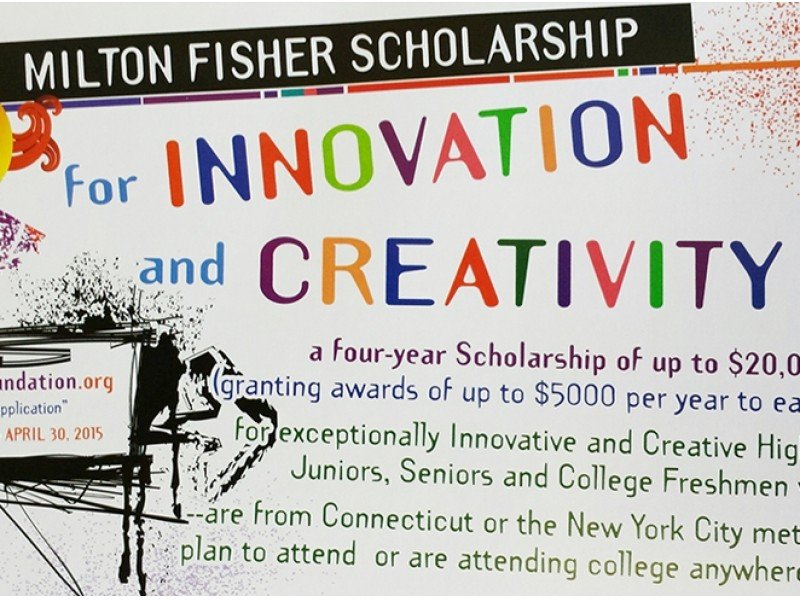There are several reasons why people choose an MBA. From an increased lifetime earnings potential to job offers and promotions. Generally, an advanced degree in business can be of great benefit which is why there is a high rise in the demand for MBA Student Loans to support the pursuit.
For this reason, thousands of people (most of them are already on the workforce) opt for an MBA every year. With the advent of online courses and the availability of (accelerated) MBA loans for professionals, it’s easier than ever to work towards a master’s degree.
But, how do you assess an MBA Loan? Possible ways to apply for student loans for MBA programs has been compiled in this article.
Here’s what you need to know about paying for your MBA program, including the best student loan options for paying for your MBA.
How much is an MBA?
Getting an MBA is expensive. The Master of Business Administration is a great way to improve your business skills – but it comes at a price. According to a recent Investopedia article, the average cost of tuition for a two-year MBA program alone is $80,000. And that’s just lessons alone.
If you take into account other expenses such as books, accommodation, and meals, etc., the price could rise to $100,000 to $200,000. And for a full-time program, the opportunity cost of lost wages could be huge.
This can be a difficult pill for someone trying to pay their way while balancing a full-time job and all other expenses of life.
While the cost can seem high, the return on investment for achieving an MBA can be astonishing. Some graduates can double their salary immediately after graduation.
The degree can pay for itself very quickly with the right program and the right career prospects. Regardless of whether you are considering a part-time MBA program or a full-time MBA program, you will likely need student loans as part of your financial support.
How do I pay off my MBA loans?
There is a smart order for your MBA program – and that doesn’t start with student loans. Before you ever start an MBA program, you need to consider the ROI (Return on Investment) of your MBA program.
The goal of an advanced degree like an MBA is to help you advance your career (and salary). In addition to your current job, with an MBA you can also build a stronger network that enables you to get a better job after graduation.
You can follow this list which we have compiled from best to worst to get an idea of how to pay for your MBA program.
- Employer Tuition Assistance Program
- Your own savings
- Scholarships and grants
- Direct PLUS student loans
- Private student loans
#1. Employer Tuition Assistance Program
One of the great things about an MBA program is that many employers also offer various tuition support programs to pay for all (or some) of the costs of getting your MBA. These programs can be run under the name Tuition Reimbursement Program or Tuition Assistance Program.
#2. Your Own Savings
After dealing with employer benefit programs, you may be able to consider using your own savings. This is especially true for people who go back to school in the middle of their careers. You may have enough savings to greatly reduce the cost of your MBA program.
Some rules to keep in mind when using your own savings to pay for an MBA:
- Never use the money on retirement plans (i.e., do not pull or borrow from your 401k, IRA.
- Make sure you have at least 6 months of an emergency fund
If you follow these rules, it is safe to use the other money to pay for the school. This could significantly reduce or eliminate the number of student loans you might need to borrow.
#3. Scholarships and Grants
When you go back to school for an MBA, you may even have seen scholarships and grants as something that MBA candidates “do”. But there is definitely free money available for MBA candidates, and you should use that.
#4. Direct PLUS loans for MBA students
When you’ve exhausted all the options to pay for your MBA, you should take a look at Direct PLUS MBA Student Loans.
These loans can be used to cover the maximum cost of participation (according to your school’s grant office) minus all other grants received.
For most MBA candidates who take out student loans, Direct PLUS loans can make the difference in what is required to pay college.
#5. Private Student Loans
Some MBA candidates can’t just rely on federal loans to pay for an MBA. They either exhaust the federal credit limits due to the cost of their school, they need more funds to cover the cost of living while at school, or they need more time to complete their education (which increases costs).
Others may find more value in taking out personal loans because they have excellent loans and repayment options.
In this case, private student loans can be a cheaper alternative due to low-interest rates and excellent borrower programs.
#6. Refinancing Student Loans After Graduation
If you find this article after you have already taken out loans for your MBA, you can consider refinancing student loans.
If you have private loans or high-yield federal loans (like the Direct PLUS loans mentioned above), refinancing may reduce your payment or save interest on your MBA student loan.
By refinancing, you take out a new student loan from a private lender and use it to repay your other loans. With the new student loan, you can qualify for a lower interest rate, a better repayment period, or a lower monthly payment.
If you have federal student loans, refinancing will cost you the option to apply for an income-based repayment plan or forbearance.
In some cases, however, MBA candidates are the exception to the rule. After obtaining your MBA, you may have the potential to increase your salary by a substantial amount.
How Much MBA Student Loan Can I Get?
According to the National Center for Education Statistics, the average graduate from a business school owes more than $66,000 in student loans, and 51% of MBAs take out student loans.
Thinking if you are qualified for student loans? You can qualify yourself for it. Click on the link to explore
How to qualify for student loans: 10 Key Steps
Where can I get MBA loans in 2022?
Most students seeking an MBA review federal student loans to fund their education, as these student loans are generally considered the best or “safest” option.
It is certainly advisable to primarily consider the federal student loan options, although depending on your particular circumstances, they may not be the best option for you.
There are two types of federal student loans available to MBA students:
- Federal Direct not subsidized (up to $20,500 / year)
- Federal PLUS Direct
Federal loans are usually your best bet. However, you may want to consider a private MBA loan if your credit is excellent and you get a high-income job after completing your program.
In general, you should first exhaust the unsubsidized direct federal loans. These loans have low fees – around 1% – and offer fixed interest rates of 6.08%.
These conditions can be close enough to what a private lender would offer you that the additional costs are worth the protection that comes with federal loans.
Here is a list of Best Student Loans for MBA available for you
- Credible: Best Overall
- Sallie Mae: Best for Flexible Options
- College Ave: Best for Flexible Repayment Plans
- Citizens Bank: Best from a Major Bank
- CommonBond: Best for Choosing Your Repayment Option
- Discover Student Loans: Best for Good Grades
- Ascent: Best for Undergrads with No Co-Signer
- LendKey: Best Backed by Community Lenders
#1. Credible: Best Overall
Credible is at the top of this list due to its unique and helpful function. No direct student lender is credible. Instead, you can apply for Credible Pricing for up to nine lenders at the same time.
This saves you time and possibly money as Credible does the shopping for you.
These lenders include options for undergraduate and graduate loans with interest rates (APR) from 2.84% variable and 4.21% fixed with Autopay.
The term ranges from five to 20 years. If you need a private student loan, you can probably find it at a competitive price in a Credible marketplace.
#2. Sallie Mae: Best for Flexible Options
Sallie Mae offers both student and doctoral student loans with fixed and variable interest rates. Sallie Mae even offers loans for K-12 if you want to send your kids to a private school.
Sallie Mae can offer pretty much any variation of the existing private student loan. Students and parents can borrow, and there are no origination or prepayment fees.
In the case of bachelor loans, the variable interest rates are between 1.50% and 9.66% and the fixed interest loans between 4.74% and 11.85% of the annual interest rate.
As soon as you have made 12 punctual payments, you can apply for a co-signing approval and carry the loans yourself.
#3. College Ave: Best for Flexible Repayment Plans
College Ave is a full-service student lender with loans for student, graduate, and parent. There are no early withdrawal requests or fees, and it only takes about three minutes to fill out an application and make a decision.
The fixed loans are between 4.39% and 11.98% and the variable interest rates between 1.79% and 10.97%.
College Ave only grants student loans, so they’re pretty good at it. College Ave loans are simple and straightforward. The online-focused lender offers terms of 5 to 15 years.
It offers a co-signer approval option. One thing to note: College Ave does not offer a unified indulgence option. These are checked and approved on a case-by-case basis.
This offers more flexibility, but there are some doubts as to whether you will be admitted if you run into financial difficulties.
#4. Citizens Bank: Best from a Major Bank
Citizens Bank has been around for a long time and offers competitive pricing, low fees, and a wide range of options. Student loans from Citizens Bank are issued under the branding Citizens One and are available to students or parents for terms of 5, 10, and 15 years.
It takes a while to qualify for co-signing – 36 on-time payments, to be precise. The fixed interest rates are between 4.72% and 12.04% and the variable interest rates between 2.76% and 10.13% of the annual interest rate.
As with most student lenders, automatic payments give you a 0.50 percent discount. Citizens do not charge any origination or prepayment fees.
You should never have to pay an additional fee to repay your student loans early, but these types of lenders don’t make it onto the list.
#5. CommonBond: Best for Choosing Your Repayment Option
CommonBond is not just a student lender trying to make money. They also do a lot of social good, which happens a lot through partnering with non-profit Pencils of Promise.
CommonBond also offers a business program to offer student loans as employee benefits. They offer four repayment options that start either at school or after graduation.
CommonBond has no application or prepayment fees, interest rates are competitive and no origination fee is charged for co-signed loans.
Loans are available to students, students, and parents. The variable interest rates for these loans are between 3.31% and 9.29% of the annual interest with a payback period of 5 to 15 years.
The fixed interest rates are between 5.45% and 9.74% of the annual interest rate. (All prices listed include a 0.25 percentage point discount you get when you sign up for automatic payments.)
#6. Discover Student Loans: Best for Good Grades
Discover is best known for its role as one of the top four credit card networks in the United States, but nowadays it offers much more than just the option to pay with plastic. Discover has grown and now offers student loans on competitive terms.
The variable interest rates are between 2.80% and 11.37% of the annual interest rate and the fixed interest rates are between 4.74% and 12.74% of the annual interest rate (including an autopay discount of 0.25 percentage points). Loans have a term of 15 or 20 years without flexibility.
There are no registration, origination or delay fees from Discover. In fact, there are no fees at all. Discover doesn’t even charge late fees.
This is a unique and potentially valuable feature for some borrowers. For borrowers with a GPA of 3.0 or better, Discover also offers a cash bonus of 1.0% on every new student loan.
#7. Ascent: Best for Undergrads with No Co-Signer
Ascent is not as well-known as some other student loan lenders, but its independent loan does not require a co-signer, making it a great option for upper-class students.
It also offers a co-signed loan. For full-time juniors, seniors, and students, Ascent may be one of the few ways to qualify for personal loans without someone else’s help, and prices are competitive.
Fixed interest rates range between 4.21% and 13.16%, and variable APRs start at 3.16% and increase to 11.90%. (These rates include a 0.25 percentage point discount that comes with automatic payments.)
#8. LendKey: Best Backed by Community Lenders
LendKey funds loans through partnerships with credit unions and community banks. However, all loans are still serviced by LendKey, making the bank or credit union behind the scenes invisible to borrowers. LendKey does not offer parent loans, only students.
It also offers less flexibility for school repayment. However, there are no origination or prepayment fees, and interest rates are fairly competitive.
The fixed interest rates are currently between 4.86% and 11.24% of the annual interest rate and the variable interest rates between 3.10% and 10.17%. These prices include an autopay discount of 0.25 percentage points.
With LendKey in the middle, you get a simple high-tech experience of the savings and power of a credit union community.
In summary for the best MBA loan, we can conclude that the following options are perfect for these particular class of students;
- Federal Subsidized/Unsubsidized Loan: Best for All borrowers as a first option
- Federal Grad PLUS Loan: Best for Borrowers who want to minimize risk
- CommonBond Private Student Loan: Best for Borrowers with excellent credit
- Citizens One Private Student Loan: Best for Borrowers with excellent credit
- College Ave Private Student Loan: Best for Students getting an MBA part-time
- Sallie Mae Private Student Loan: Best for Students getting an MBA part-time
- Prodigy Private Student Loan: Best for International MBA students
- SoFi Private Student Loan: Best for Graduate program loans
- Earnest Private Student Loan: Best for Graduate program loans
What are the steps on how to apply to MBA Loans?
Today, technology has made it very simple to apply for an education loan from anywhere in the country. If a candidate’s bank allows online loan applications, their loan is just a click away. Here’s how:
- The student must fill out an online application form for educational loans.
- The bank will contact the student and parents to answer questions.
- A representative of the bank visits the student’s house and picks up a signed application form with the supporting documents.
- The student provides a completed application form for educational loans with all the necessary supporting documents.
- A bank loan team reviews and signs the application for an educational loan.
- The bank then approves the educational loan or requests additional information that is required by the student’s end.
- As soon as the student’s signature on the education loan agreement is received, all formalities for the loan payment are completed.
- The amount of the educational loan is deposited electronically in the required bank account (depending on the needs of the student or institute).
Confused about how to pay off your student debt? Click on the link to access the
7 Practical Tips On How to Pay Off Your Student Loans very fast
When are MBA Student loans due?
The duration of the payment term for your MBA debt depends on the amount of the debt when you leave school, the length of the repayment schedule, and your financial ability to refinance and make additional payments. The standard repayment period for doctoral student loans is 10 years.
MBA Student Loans – FAQs
Generally speaking, an MBA is worth doing. It increases your capacity and potential life-time earning skills. So, taking a loan – for an MBA – is worth it when you have the means to repay it.
Government-backed loans worth up to £10,906 (2022) are available to help pay for full or part-time postgraduate study. This will not be enough to cover tuition fees for many MBA courses, but can make a significant contribution, especially if combined with other funding methods.
Find MBA fellowships, scholarships and grants. Fellowships, scholarships and grants are aid you don’t have to repay.
Use employer aid for business school. Money your employer provides or you earn by working can help you pay for an MBA.
Tap into your savings.
Take out business school student loans.
Conclusion
The bottom line is that an MBA can be expensive, but for many, it is worth it. The trick is to make sure you find out how much it is worth – almost like in step 0 of your MBA training.
Keep in mind that you can make sure an MBA is valuable by paying as little as possible out of your own pocket. Contact your employer and try to maximize student loan support programs. Only borrow what you absolutely need in student loans.
References
- thecollegeinvestor.com › Loans › Student Loans
- www.mastersportal.com › articles › 6-ways-of-paying-for-an-MBA
- www.nerdwallet.com › best › loans › student-loans › MBA-student-loans
- www.collegeraptor.com › Paying For College





